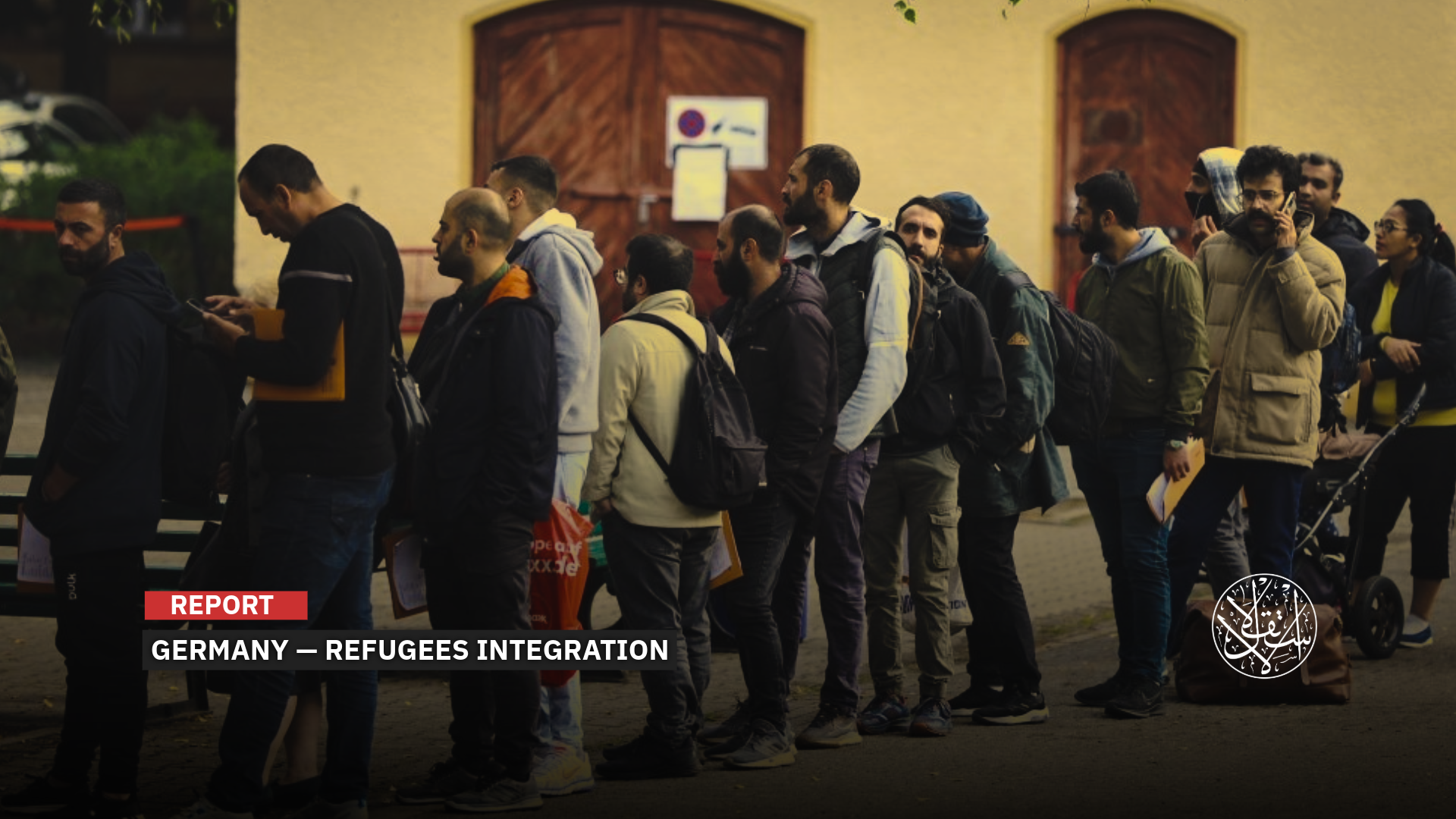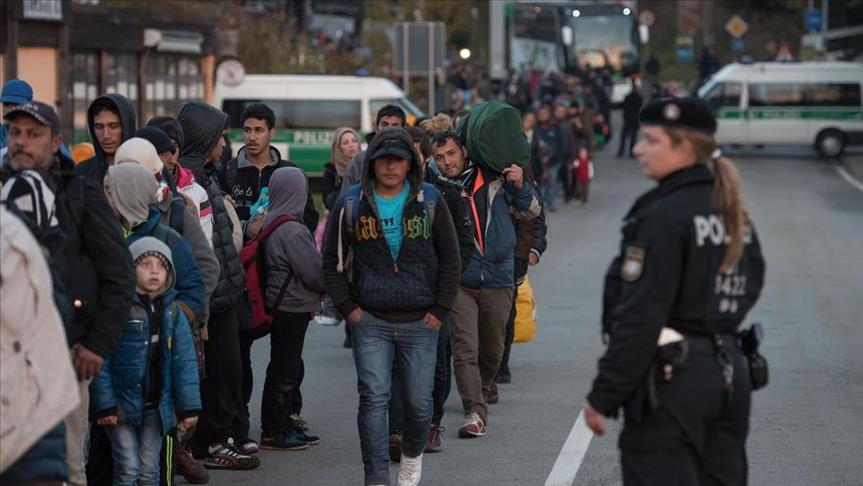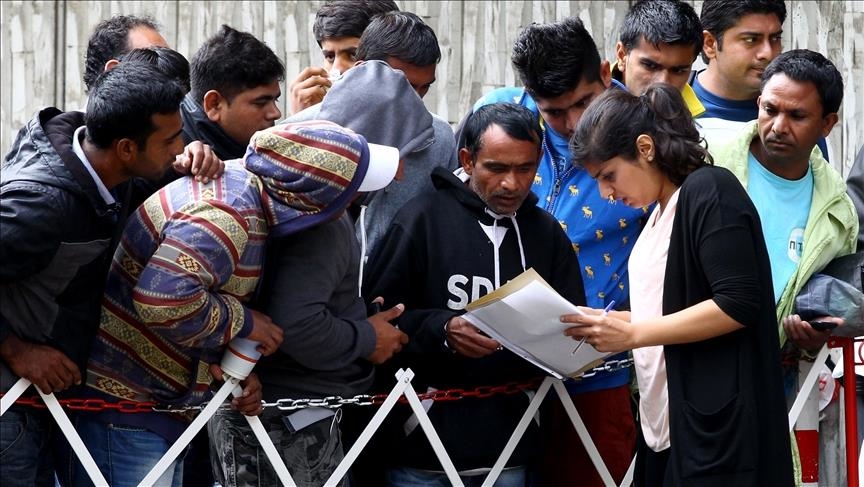Calls Grow to Integrate Refugees into Germany’s Workforce: What Is Berlin’s Plan?

There are bureaucratic obstacles preventing a quick start to work.
In a move expected to save significant funds, calls are growing in Germany to bring more Afghan and Syrian refugees into the labor market rather than relying solely on government social benefits.
A decade after the so-called major refugee wave from the Middle East and Africa, the German government found that most refugees remain unemployed while still receiving full refugee benefits.
Strengthening the Labor Market
On August 27, 2025, Mathias Middelberg, deputy leader of the Christian Union bloc in the German parliament, called for more Afghan and Syrian recipients of the citizen allowance to enter the workforce.
Middelberg, a member of the Christian Democratic Union (CDU), told Bild newspaper that employing these refugees would reduce public spending and ease the burden on the state budget.
Total spending on the citizen allowance reached about 47 billion euros in 2024, up four billion euros from the previous year.
The Christian Union, comprising the CDU and the Christian Social Union (CSU), aims to cut costs and has criticized the low participation of Syrians and Afghans in the labor market, according to the German Press Agency (dpa).
Middelberg said only 36.7% of Syrians and 37% of Afghans are employed in positions covered by social insurance, meaning officially registered jobs that pay taxes.
By contrast, 52.8% of Syrians and 46.7% of Afghans receive the citizen allowance, highlighting a large untapped potential for workforce integration.
“We cannot accept that hundreds of thousands of young asylum seekers here in Germany are unemployed for decades,” he said.
In a separate interview with the Welt television channel, Middelberg noted that migrants from Poland or Romania receive the citizen allowance at a rate of only 6 to8%, comparable to Germans themselves.
He added that similar levels should be reached, at least in the medium term, for those who came through the asylum system.
Despite the stricter asylum policies adopted by the new federal government, made up of the CDU, CSU, and Social Democratic Party, little has changed on this front.
Integration of refugees and asylum seekers remains a major challenge in many German cities, where municipalities struggle to provide housing and shelter.
In these cities, low-income Germans, asylum seekers, and long-term residents all compete for affordable housing, creating a pressing need for controlled and organized migration.
For example, in the city of Linnich, with 13,000 residents in North Rhine-Westphalia near the Belgian and Dutch borders, the provincial government continues to receive new refugees each month.
Currently, 260 refugees live there, coming from Syria, Afghanistan, Ukraine, and Africa, a figure unchanged since 2024.

Key Obstacles
A study conducted by the Institute for Employment Research (IAB) of the Federal Employment Agency in August 2025 found that the greatest potential for increasing employment among refugees lies with women.
However, one major barrier remains the “insufficient availability of childcare in some cases.”
Refugee women are often less educated and trained, face poorer health outcomes than men, and frequently join integration courses later.
According to the study, 64% of people aged 15 to retirement who arrived in Germany in 2015 were employed by 2024.
There is still a notable income gap between refugees and the general population. The study found that the average monthly income for full-time employed refugees rose from 1,398 euros in 2016 to 2,675 euros in 2023.
Despite the increase, this represents only 71% of the general population’s income, meaning half of full-time refugee employees earn more than the average and half earn less.
When interpreting wage data, the IAB noted that many refugees are still young and “at the start of their careers.”
The figures highlight the importance of training programs, recognition of professional qualifications, and targeted career development to ensure “sustainable labor market integration and advancement prospects.”
The IAB also noted numerous bureaucratic obstacles that slow rapid entry into the workforce.
The study further found that refugees’ success in the labor market declines in regions with stronger anti-foreigner sentiment.
Other barriers include restrictions on family reunification, asylum procedures, long-term shared housing, in-kind benefits, payment cards, and residency requirements.
On June 27, 2025, the German Bundestag approved a law suspending family reunification for refugees granted “subsidiary protection” for two years.
The decision sparked broad debate in parliament and represents the first step in a package of new laws the federal interior minister, Alexander Dobrindt, aims to pass to limit the flow of migrants and refugees into Germany.
The measure targets refugees without full protection under the Geneva Convention who have been granted temporary “subsidiary protection,” offered to those at serious risk in their home countries without meeting full asylum criteria.
In 2024, the number of people with subsidiary protection in Germany reached 350,000, the vast majority from Syria, along with Afghans, Iraqis, and Eritreans.

Efforts at Integration
In their early years in Germany, many refugees were not ready to enter the labor market, hindered by institutional barriers, language gaps, and qualifications that were often difficult to transfer.
However, vocational training programs lasting up to four years, which combine language skills with technical expertise in various fields, have prompted Berlin to reconsider how to integrate these refugees. In regions where refugees feel welcomed and accepted, they find work more quickly.
“Bringing more refugees receiving social assistance into the labor market is an effort to integrate them through specialized courses and training before full employment, due to their limited experience in Germany,” legal and administrative adviser Azzam Badawi told Al-Estiklal.
“Medical reports may be required for sick or elderly refugees, and working hours could be adjusted for some individuals.”
“If a refugee is forced to work while ill, they can appeal to the courts,” he added. “Language acquisition is a major challenge for refugees, and some municipalities help them attend language courses as a first step toward employment.”
Badawi said there is a push to require refugees receiving social benefits to work in specific sectors.
He explained that in Germany, employment requirements are implemented in stages: job offers are sent first, and if refused, up to 10% of the social benefit may be deducted for one to three months.
He added that the German government is working to evaluate refugees’ skills in order to develop them, apply them effectively, or reassign individuals to other sectors based on their preferences.
“Future residency may be contingent on complying with German government procedures, and obtaining a certificate in Germany, even if tied to vocational training, increases a refugee’s opportunities for employment and personal development when specific training is needed,” he said.

Experience with Ukrainians
Recently, the German government planned to stop providing the citizen allowance to newly arrived Ukrainian refugees following the war with Russia.
Under a draft law from the Ministry of Social Affairs, Ukrainians arriving after April 1, 2025, and future arrivals would no longer receive the full citizen allowance but instead reduced benefits similar to those for asylum seekers.
The asylum seeker allowance is 441 euros per person, compared with 563 euros for the citizen allowance, and healthcare benefits for asylum seekers would also be reduced.
Enzo Weber, a professor of empirical economic research at the University of Regensburg, said, “If the German government wants to save money, it should provide work opportunities. This not only reduces social spending but also generates additional taxes and fees for the government.”
Weber told German broadcaster ntv on August 7, 2025, that “if 100,000 unemployed people enter the labor market in a single year, it would generate three billion euros in new revenue,” noting that the current government plan does not save any money.
While the federal government would save about one billion euros, states and municipalities would bear additional costs for asylum seeker benefits.
Currently, about 35% of Ukrainians of working age in Germany, roughly 930,000 people, are employed, most contributing to social insurance.
According to the Federal Employment Agency, around 40% are unemployed, most receiving citizen allowance payments. About 57% receive social benefits, including supplemental aid that combines citizen income with wages.
Nearly one-quarter of Ukrainians in Germany are neither employed nor officially unemployed, with many participating in language, integration, and training courses.











